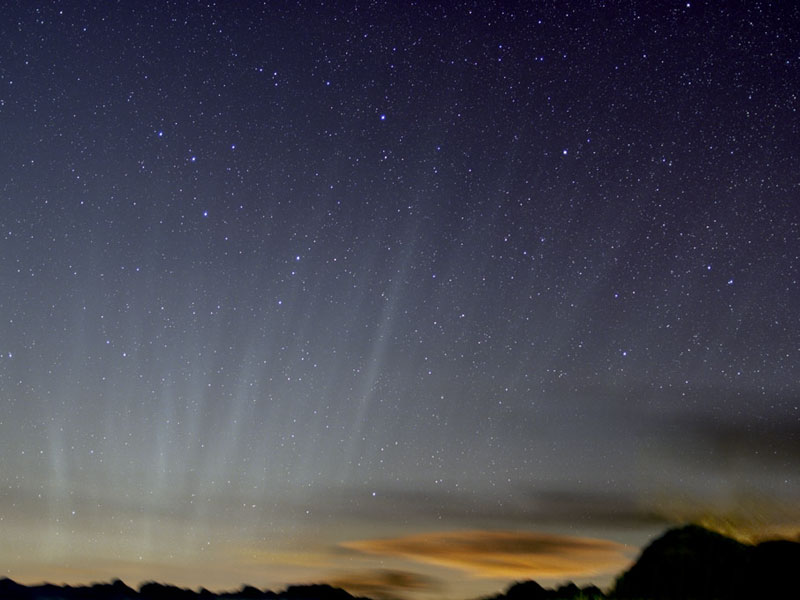Credit & Copyright: Marco Fulle
(Stromboli online)
Explanation:
What's happening over the horizon?
Many a sky enthusiast who thought they had
seen it all had never seen anything like this.
To the surprise of many Northern Hemisphere observers, the tail of
Comet McNaught
remained visible even after the comet's head set ahead of the Sun.
What's more, visible were bright but extremely rare
filamentary striae from the comet's expansive dust tail.
The cause of dust tail striae are not known for sure, but are possibly related to
fragmentation
of comet's nucleus.
The last comet to show
prominent striae was
Comet Hale-Bopp in 1997.
Pictured above, the tail of
Comet McNaught was caught just after sunset last Friday
above the
Carnic Alps of northern
Italy.
1999 2000 2001 2002 2003 2004 2005 2006 2007 2008 2009 2010 2011 2012 2013 2014 2015 2016 2017 2018 2019 2020 2021 2022 2023 2024 2025 |
Yanvar' Fevral' Mart Aprel' Mai Iyun' Iyul' Avgust Sentyabr' Oktyabr' Noyabr' Dekabr' |
NASA Web Site Statements, Warnings, and Disclaimers
NASA Official: Jay Norris. Specific rights apply.
A service of: LHEA at NASA / GSFC
& Michigan Tech. U.
|
Publikacii s klyuchevymi slovami:
Comet McNaught - comet tail - Kometa MakNota - kometnye hvosty
Publikacii so slovami: Comet McNaught - comet tail - Kometa MakNota - kometnye hvosty | |
Sm. takzhe:
Vse publikacii na tu zhe temu >> | |
